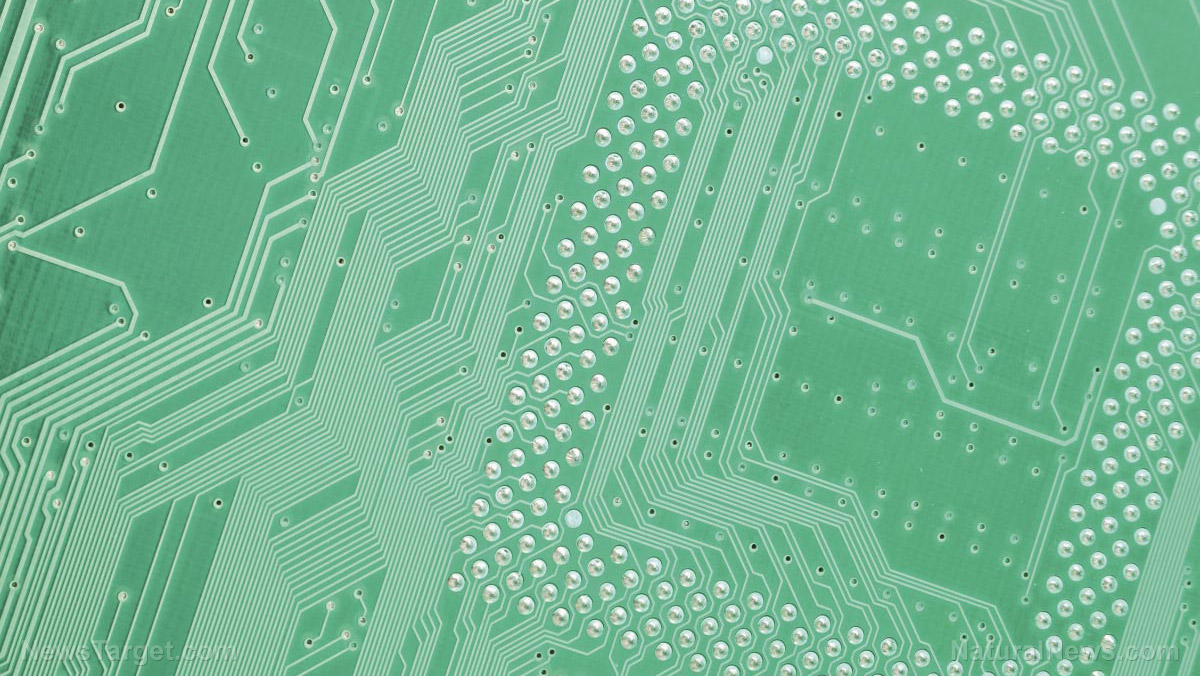
Advertisement
A joint study between British and Japanese universities came up with a way to force light into assuming a corkscrewing shape. The twisted light could carry a lot more electronic data than a straight beam.
The researchers produced this twisted light with an optical circuit made up of tiny gears, the biggest of which measured only one micrometer across. The gears are made of germanium, a material with similar properties as silicon.
Up to a quarter million of these light-emitting gears could be fitted within a small area on the surface of a computer chip. They could greatly increase the processing power of the chip, making it much more effective at optical computing and communication tasks.
Twisted light – that is to say, light that possesses orbital angular momentum – offers a lot of potential advantages when it comes to carrying electronic information. Conventional optical systems encode data bits by changing the number of photons or switching from one polarization state of light to the other and back. Twisted light, on the other hand, uses individual twists to represent a data bit. More data can therefore be encoded and transported with smaller amounts of light. (Related: Researchers use laser holograms to trap and control tiny objects the size of single cells.)
Upgrading silicon computer chips with twisted light-emitting germanium gears
Silicon is not the best material when it comes to the efficient emission of light. It is, however, the most commonly-used material for producing computer chips and electronics. So building a small light emitter on a computer chip is considered an impossible task. The same issues applies to germanium. Unlike silicon, though, germanium can increase its efficiency at emitting light if it gets stretched. The drawback to doing so is that excessive strain would damage the material.

Researchers from the University of Southampton and their Japanese counterparts came up with germanium micro-gears that can freely stand on their edges. The very fine teeth that lined the circumference of the gears were carefully etched out with an electron beam. These structures were covered by a thin layer of oxide. Between their freestanding design and protective film, the germanium gears could take a lot of tensile strain. At the same time, their crystalline structure would not be damaged by the strain. The gears were set on a pedestal made of silicon. This base connects the germanium structures to the upper part of the silicon substrate. The arrangement served to dissipate heat while the gears are generating twisted light for data.
An electronic circuit made of thousands of tiny gears adds new twists to light
The new electronic circuit was activated with ordinary light emitted by a green laser. The germanium micro-gears absorbed this green light and began producing photons of its own.
The new light particles moved around the toothed edges of the gears. This motion twisted the light, which then bounced off the teeth and departed the gear. In essence, the circuit became a tiny laser that emitted twisted light.
The Southampton-led research team carefully compared this light emission to computer models of the same process over extremely short periods of time. They were able to verify that their electronic circuit was producing twisted light.
“We can precisely design our device to control the number of rotations per propagation wavelength and the wavelength of the emitted light,” said Southampton researcher Abdelrahman Al-Attili, who served as the main author of the scientific paper.
Al-Attili and his colleagues were currently refining the ability of the germanium micro-gears to produce twisted light. Since silicon chip production processes could also handle germanium, it would be easy to add thousands of these gears to computer chips, creating new optical devices.
Sources include:
Submit a correction >>
This article may contain statements that reflect the opinion of the author
Advertisement
Advertisements
















